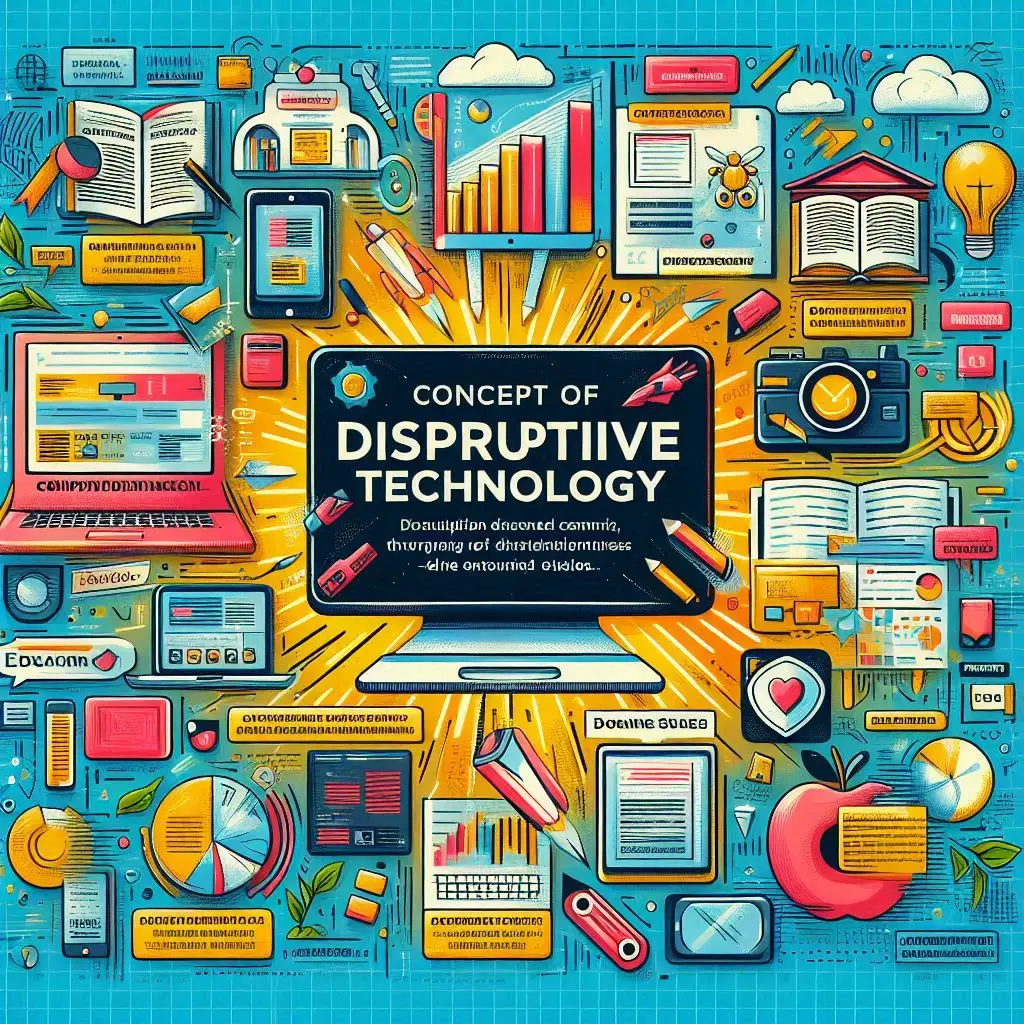
Disruptive Technology Meaning Examples and Its "Strike Force" in Education
Introduction
In this article, Disruptive Technology Meaning Examples and Its "Strike Force" in Education, we’ll explore the concept of disruptive technology, delve into its meaning and real-world examples, investigate its "strike force" effect on industries, and highlight its unique role in the educational sector. From reshaping traditional classrooms to enabling remote and personalized learning, disruptive technology in education marks a major shift in teaching and learning methods.
The term "disruptive technology" has gained popularity in recent years, signifying a breakthrough that redefines industries and transforms the way society functions. Disruptive technologies often represent innovations that overhaul existing systems or practices, providing more efficient, accessible, or affordable solutions.
Disruptive Technology
Disruptive technology refers to innovations that significantly alter or replace established practices, systems, or industries. These technologies often begin as unassuming solutions that cater to niche markets, gradually advancing in quality and capability until they eventually overtake traditional methods or technologies. The notion of disruptive technology challenges the status quo by redefining what is possible within an industry and shifting the focus to more efficient, user-centered solutions. Some key features of disruptive technologies include accessibility, scalability, and the potential to change entire industries or societal practices.
By understanding disruptive technology, we gain insight into the forces that drive modernization and adaptation within industries. It is not just the technology itself but the way it reshapes markets and introduces new ways to operate. For instance, digital streaming platforms like Netflix disrupted traditional cable television, while online learning has reshaped the educational sector. Disruptive technology forces traditional industries to adapt or risk obsolescence, showing a remarkable capability to transform society.
Disruptive Technology Meaning
The meaning of disruptive technology goes beyond mere technological advancement—it signifies a revolutionary approach that renders existing systems redundant. Originally introduced by Clayton Christensen, the term describes innovations that displace established products or services. Unlike sustaining technologies, which improve existing systems, disruptive technologies create entirely new avenues that redefine market demands. The real power of disruptive technology lies in its ability to lower costs, broaden access, and introduce new methods or products that replace existing ones.
In essence, the meaning of disruptive technology lies in its transformative potential. Examples include artificial intelligence (AI) reshaping sectors like healthcare, finance, and logistics by providing more efficient, data-driven solutions, and blockchain technology altering traditional financial transactions. These innovations force industries to evolve or adapt, underscoring disruptive technology’s core purpose: reimagining what is possible by rendering conventional practices outdated.
Disruptive Technology Examples
Disruptive technology examples illustrate the impact of these innovations across diverse sectors. For instance, electric vehicles (EVs) led by Tesla are disrupting the automotive industry by pushing towards eco-friendly transportation. Similarly, smartphones transformed the telecommunications sector by replacing landlines, cameras, and computers in a single device. Other notable examples include ride-sharing apps like Uber and Lyft, which disrupted the taxi industry, and e-commerce giants like Amazon, which reshaped retail.
Examples of disruptive technology are also evident in the medical field, where telemedicine has revolutionized patient care by providing remote consultations and reducing the need for in-person visits. Robotics, renewable energy technologies, and 3D printing continue to challenge existing methods and practices in their respective fields, paving the way for innovation-driven economies. Each example showcases disruptive technology's potential to overhaul traditional approaches, emphasizing its role as a transformative agent.
Disruptive Technology Strike Force
The concept of disruptive technology strike force refers to the powerful impact that these innovations have on established industries, challenging traditional practices and creating new standards. The "strike force" effect of disruptive technology is not just about replacement but also about empowerment, enabling smaller companies or entirely new markets to compete with established industry giants. This strike force often catalyzes a chain reaction of adaptation, pushing companies to innovate or be left behind.
In industries like transportation and communication, the strike force of disruptive technologies has forced traditional businesses to adopt similar innovations or risk irrelevance. For instance, the rise of cloud computing has changed the software industry, enabling startups to develop scalable services without extensive infrastructure. The strike force effect has democratized many sectors, making once-unreachable services and products accessible to a wider audience, reshaping the economy and driving continuous innovation.
Disruptive Technology in Education
Disruptive technology in education has introduced dynamic and interactive methods that have reshaped traditional learning environments. Technologies such as e-learning platforms, digital textbooks, and artificial intelligence-based tutoring have changed how students access and engage with educational content. Online courses and Massive Open Online Courses (MOOCs) have made education more accessible, breaking down geographical and financial barriers that once limited learning opportunities.
The application of disruptive technology in education goes beyond just remote learning; it enhances personalization, allowing educators to tailor learning experiences to meet individual student needs. AI-driven applications can assess student progress in real time and adapt learning materials accordingly. Additionally, virtual reality (VR) and augmented reality (AR) are making complex subjects like history and science more immersive and engaging. Disruptive technology in education highlights a fundamental shift from one-size-fits-all instruction to personalized, on-demand learning that caters to diverse student needs.
Conclusion
In conclusion, disruptive technology represents an unprecedented force that challenges existing systems and drives innovation across industries. Defined by its capacity to create new markets and redefine existing ones, disruptive technology has reshaped everything from entertainment to education. The examples provided underscore its transformative impact, showing how technologies like electric vehicles, smartphones, and telemedicine redefine industries and elevate consumer expectations. With a unique "strike force" that compels traditional companies to adapt or risk obsolescence, disruptive technology fosters a culture of innovation and progress.
In education, disruptive technology has paved the way for accessible, tailored, and engaging learning experiences, marking a paradigm shift from conventional teaching methods. By understanding and embracing the potential of disruptive technologies, industries and individuals can remain at the forefront of innovation, prepared to meet the demands of an ever-evolving world.

